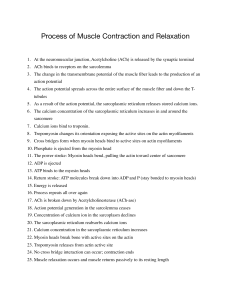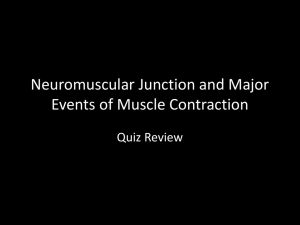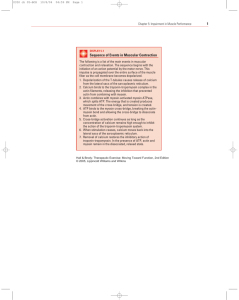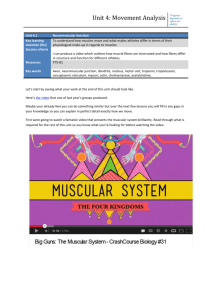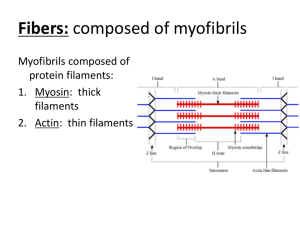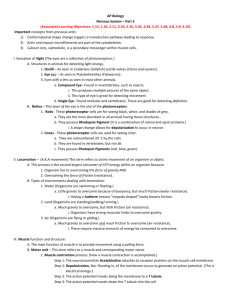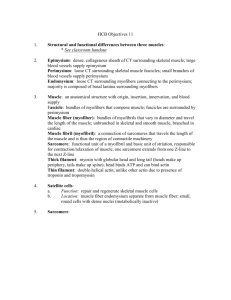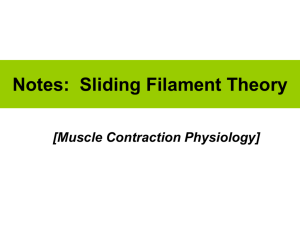SUMMARY OF EVENTS INVOLVED IN THE CONTRACTION AND
advertisement
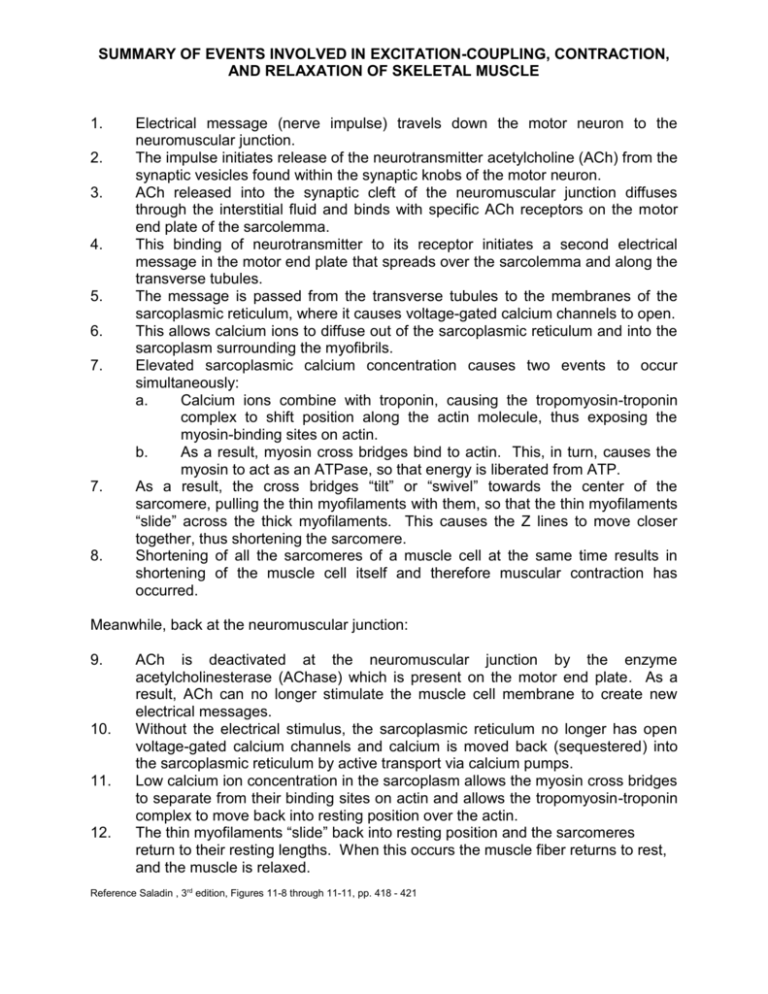
SUMMARY OF EVENTS INVOLVED IN EXCITATION-COUPLING, CONTRACTION, AND RELAXATION OF SKELETAL MUSCLE 1. 2. 3. 4. 5. 6. 7. 7. 8. Electrical message (nerve impulse) travels down the motor neuron to the neuromuscular junction. The impulse initiates release of the neurotransmitter acetylcholine (ACh) from the synaptic vesicles found within the synaptic knobs of the motor neuron. ACh released into the synaptic cleft of the neuromuscular junction diffuses through the interstitial fluid and binds with specific ACh receptors on the motor end plate of the sarcolemma. This binding of neurotransmitter to its receptor initiates a second electrical message in the motor end plate that spreads over the sarcolemma and along the transverse tubules. The message is passed from the transverse tubules to the membranes of the sarcoplasmic reticulum, where it causes voltage-gated calcium channels to open. This allows calcium ions to diffuse out of the sarcoplasmic reticulum and into the sarcoplasm surrounding the myofibrils. Elevated sarcoplasmic calcium concentration causes two events to occur simultaneously: a. Calcium ions combine with troponin, causing the tropomyosin-troponin complex to shift position along the actin molecule, thus exposing the myosin-binding sites on actin. b. As a result, myosin cross bridges bind to actin. This, in turn, causes the myosin to act as an ATPase, so that energy is liberated from ATP. As a result, the cross bridges “tilt” or “swivel” towards the center of the sarcomere, pulling the thin myofilaments with them, so that the thin myofilaments “slide” across the thick myofilaments. This causes the Z lines to move closer together, thus shortening the sarcomere. Shortening of all the sarcomeres of a muscle cell at the same time results in shortening of the muscle cell itself and therefore muscular contraction has occurred. Meanwhile, back at the neuromuscular junction: 9. 10. 11. 12. ACh is deactivated at the neuromuscular junction by the enzyme acetylcholinesterase (AChase) which is present on the motor end plate. As a result, ACh can no longer stimulate the muscle cell membrane to create new electrical messages. Without the electrical stimulus, the sarcoplasmic reticulum no longer has open voltage-gated calcium channels and calcium is moved back (sequestered) into the sarcoplasmic reticulum by active transport via calcium pumps. Low calcium ion concentration in the sarcoplasm allows the myosin cross bridges to separate from their binding sites on actin and allows the tropomyosin-troponin complex to move back into resting position over the actin. The thin myofilaments “slide” back into resting position and the sarcomeres return to their resting lengths. When this occurs the muscle fiber returns to rest, and the muscle is relaxed. Reference Saladin , 3rd edition, Figures 11-8 through 11-11, pp. 418 - 421
